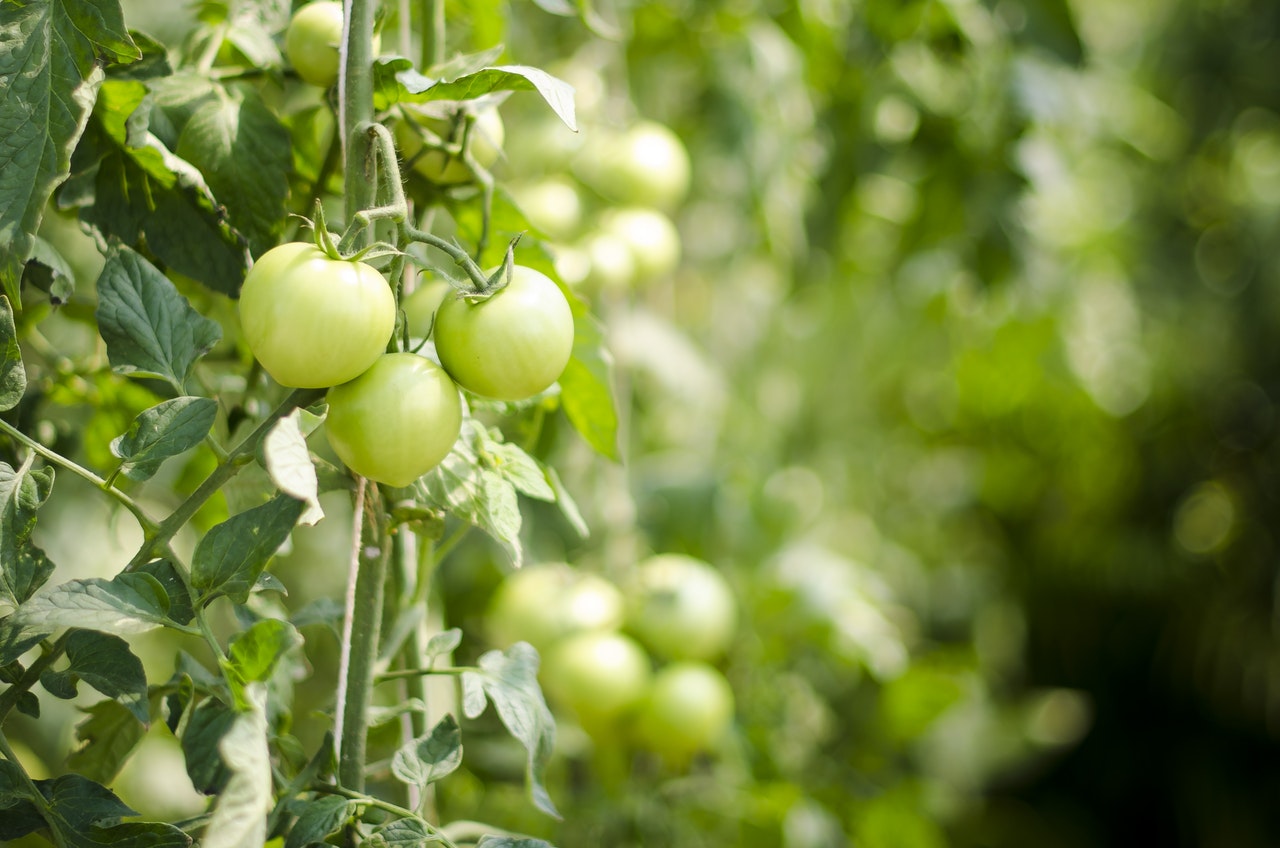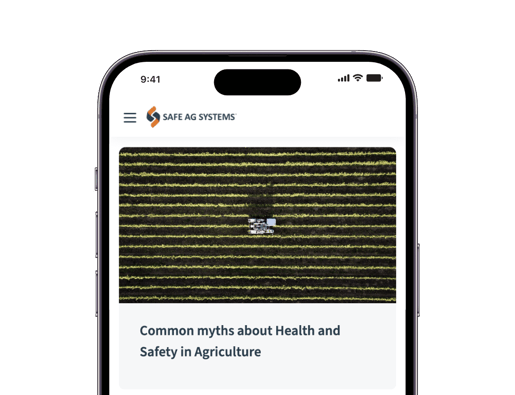Record Keeping for Compliance
Introduction
The Agricultural Industry is made up of a group of smaller sectors including growers, farmers and nurseries. These sectors include both small specialist producers as well as large scale productions. Growers focus on supplying commodities such as flowers, turf, vegetables, fruit, and nuts through to grain and other crops whilst nurseries are defined as the production and propagation of plants.
Due to the large economic role that agriculture plays in the global economy it is more important than ever to ensure policies and standards are established, maintained, and adhered to. According to the World Bank Group, agriculture is crucial to global economic growth. In 2018 agriculture equalled to four percent of global gross domestic product (GDP).
Chapter Contents
01 Compliance in the Agricultural Industry
The agri-food supply chain is a process that flows from production through to processing, distribution, trade, and finally reaches consumption. Also known as “field to fork”, this series of events has multiple stages, where at each stage there are regulations, legislations, accreditations, and standards that must be met. This agri-food supply chain serves the purpose of holding each person responsible for managing that chain, accountable for breaches that occur, encouraging a proactive approach to food safety.
Compliance in Agriculture covers a range of responsibilities including health and safety, the environment, labour, business ethics, animal welfare, traceability, and food safety.
02Why is it important to be compliant?
Compliance with regulatory requirements is an important factor for any farming and agricultural business. Being compliant doesn’t just support the industry, it also protects your business operations and your reputation. Complying with regulation is there to protect your workers, and it also guides you as to best practices you should implement to avoid penalties and prosecution. To be fully compliant, you must adhere to the laws applicable to your industry and country as well as organization standards, codes and frameworks.
Depending on your working environment, obligations may differ slightly, but not complying with legislative requirements can lead to heavy penalties and prosecution.
03What are the benefits of compliance in Agriculture?
It saves you money
Investing in good practices and training now can save you money in the future. Being non-compliant doesn’t just pose a risk to workers and visitors, it leaves your business at risk. As mentioned above, not complying with legislation, regulations, standards and codes can result in heavy penalties such as monetary fines. Set up a framework with appropriate policies and procedures which will help you comply with all of these requirements. Review these regularly to help improve efficiency and productivity of your workforce. By doing this, you are also likely to lower your insurance premiums due to less accidents and time off work for injuries.
Supply Chain Transparency
Along your entire agri-food supply chain, there are risks to food safety that need to be mitigated. It is an important factor not just to consumers, but vendors and regulators that you can understand the full extent of your supply chain. You should be able to identify each supplier within your chain and provide crucial information about them including harvesting practices, how the produce is transported and how they are packaged/provided to the consumer.
Competitive Advantage and Reputation
Did you know that customers tend to favour compliant, accredited businesses and brands over others? Being able to show that you are committed to worker welfare, the safety of consumers and providing quality produce that is sustainably sourced are just a few benefits. Over time, food safety has become an important selection factor and a good reputation is built on trust. Adopting these business practices promotes a positive brand image.
Worker motivation
Workers will get serious about their safety when your management team can demonstrate how they are addressing their concerns. When you make safety an important part of your business structure by providing a supportive environment and encouragement, your workers will follow your lead.
04Food Safety standards, accreditations, and certifications
To assist your farming or agricultural business with staying compliant, there are a range of standards, accreditations, and certifications you can maintain to avoid inadvertently breaching regulations and legislation at each stage of your supply chain.
What is ISO 45001 certification?
An international standard for health and safety at work, ISO 45001 was created by an independent committee of occupational health and safety experts. Released in 2018, the international standard demonstrates your compliance with health and safety law through improving working conditions, preventing injuries and diseases. Focusing on the proactive approach, ISO 45001 provides a guideline for how to best tackle the safety of their workers and visitors, this includes identifying risks and hazards.
ISO 45001 requirements provide a framework of 10 clauses:
-
Scope
-
Normative references
-
Terms & definitions
-
Context of the Organisation
-
Leadership and worker participation
-
Planning
-
Support
-
Operation
-
Performance Evaluation
-
Improvement
To become compliant with ISO 45001 you should start with a Gap Analysis to identify areas that need attention in your safety management system. Conduct a risk analysis as well as a review of your occupational health and safety processes. Once you have identified areas of non-conformance, you should create an action plan to address each area identified in your analysis and review.
When you have discovered areas that require action, it comes down to communication, awareness, and education. Your workers need to receive the appropriate training to ensure they have the skills required to complete their tasks. It is recommended that businesses then conduct an internal audit of their safety management system to establish how successful their plan has been and then review and update any areas of concern.
To receive ISO 45001 certification, you will need to partake in a formal assessment where your Safety Management System is audited by a third party/ Certification Body. The results of this audit will determine if you are approved or declined, your Certification Body may also identify areas of non-compliance that you can address in order to be approved.
Examples of some records required for ISO 45001: - not an exhaustive list
- Policies and Procedures
- Pre-operational checklists
- Risk Assessments
- Safety Inspections
What is involved in a SMETA Certification?
Sedex Members Ethical Trade Audit or SMETA is a social auditing methodology utilised by businesses around the globe. SMETA allows businesses to analyse and assess the conditions of their sites and suppliers in order to gain a better understanding of the working conditions. SMETA covers four pillars: Labour, Health and Safety, Environment and Business Ethics.
Referred to as a social audit, auditors physically visit a suppliers’ site to evaluate health and safety of workers including human rights abuse. When an audit is finished, it is proposed that buyers and suppliers collaborate to rectify any issues also known as a Corrective Action Plan Report (CAPR). A second option which can action before a buyer chooses to audit their suppliers is referred to as the supplier’s Self-Assessment Questionnaire (SAQ).
If a physical SMETA audit is not possible, you can also use of the Sedex Virtual Assessment utilising video conferencing. The Virtual Assessment is segmented into five key areas Pre-checks, Planning, Preparation, Execution and Reporting. To proceed with a Sedex Virtual Assessment the supplier site must first all of the requirements detailed in the Essential Parameters section.
Examples of some records required for Sedex Members Ethical Trade Audit or SMETA: - not an exhaustive list
- Risk Assessments
- HR Records
- Employment Contract
- Policies
- Worker Records
- Wages
- Working hours
- Overtime rates
- Training
- Machinery inspection and service logs
- Insurance, tax and other required receipts
What is involved in the Red Tractor food standards rating?
As the United Kingdom’s (UK) largest food standards scheme, Red Tractor are the driving force behind UK food and drink standards. Focussed on British produce, farmers and consumer safety, Red Tractor farm assurance provides traceability ensuring food is safely produced and is responsibly sourced. Red Tractor Standards emphasises four principles: Animal Welfare, Environmental Protection, Food Safety and Traceability. With a reputation for being the most comprehensive farm and food standards in the world, Red Tractor is considered to be the industry benchmarks for major supermarkets.
On 1st November 2021, Red Tractor will be introducing revised Standards for their Assurance Scheme. Learn more about the changes and how to prepare.
To receive the Red Tractor certification, you must join the Red Tractor Assurance Scheme which involves a number of steps in the application process. As part of this application, you will need to partake in an initial assessment with a Certification Body to run through your facilities, livestock and crops as well as your paperwork. Once you have determined areas of non-conformances / non-compliance, you will need to take actions and make corrections to supply evidence that addresses your non-conformance report.
When your evidence has been accepted and a secondary visit is completed (if applicable), your Certification Body labels your business as “Assured” within the Scheme Member Checker database. Once you have been updated in the database, you are allowed to sell your produce as “Assured”. You may or may not receive a printed or electronic copy of your Red Tractor certification.
Examples of some records required for Red Tractor Assessments: - not an exhaustive list
- Chemical Manifest
- Fertilizer applications
- Emergency Plan
- Visitor Records
- Veterinary Medicine Purchase and Disposal
- Date of purchase and quantity
- Batch Number
- Irrigation Records
- Primary source of water for each crop
- Volume
- Date and length of irrigation (time)
What is HARPS certification?
Harmonised Australian Retailer Produce Scheme, also known as HARPS, was created in 2012 and launched in 2016 by Horticulture Innovation Australia with the aim to bring some consistency to food safety certification for larger retailers. Ultimately, HARPS has aligned the need for multiple standards into a single standard that branches across multiple retailers (ALDI, Coles, Costco, Metcash/IGA and Woolworths), consequently reducing the need for multiple audits if a business supplies to more than one major retailer.
As Australia’s five major grocery retailers have differing food safety system requirements, HARPS certification incorporates the numerous standards into one. This one standard reduces the demand on time spent auditing as well as the demand on suppliers proving compliance across multiple standards. Removing the complexity, HARPS provides better quality assurance for the fresh produce supply chain. The HARPS process requires 1 audit, in two sections that are benchmarked against a Global Food Safety Initiative (GFSI) scheme plus HARPS, that fulfills retailer requirements.
Suppliers must be audited with a Base Scheme such as Freshcare Food Safety and Quality, plus HARPS. HARPS training is intended for growers, suppliers, packers and wholesalers. Once you have completed training and you are ready for your audit, it is important to note that retailers who participate in HARPS have their own approved Certification Bodies.
Examples of some records required for HARPS audits: - not an exhaustive list
- Receipts for packaging and labelling materials
- Documented checks of packaging, labelling and date coding
- Product challenge testing, based on risk assessments
- Documented Policies and Procedures for personal hygiene
- A log of all equipment, developed and maintained
- A Certificate of Currency evidencing Product and Public Liability Insurance
How do you get Freshcare certification?
If you are part of the Australian fresh produce industry, you may have of Freshcare. As Australia’s largest fresh produce assurance program, Freshcare offers five assurance standards for the Australian fresh produce and wine grape industries:
- Freshcare Food Safety & Quality – On-farm Standard
- Freshcare Food Safety & Quality – Supply Chain Standard
- Freshcare Environmental – On-farm Standard
- Freshcare Australian Wine Industry Standard of Sustainable Practice – Viticulture
- Freshcare Australian Wine Industry Standard of Sustainable Practice – Winery
When you are trained and are Freshcare certified it demonstrates that you understand the requirements of those standards. If you operate a fresh produce business, you are obliged to comply with the law, regulatory requirements and the Freshcare standards and rules. You should be aware that being compliant with Freshcare does not excuse your business from not complying with legislation.
A member of your management team must first complete Freshcare training and the system must be implemented on your farm. When you have incorporated the system into your production and operating systems, you will also need to establish record keeping practices to prepare for your audit to be verified for compliance. From this point, you can schedule a Freshcare audit with several Freshcare approved Certification Bodies across Australia. Freshcare auditors ensure the integrity and quality of compliance with Freshcare standards. Once you have actioned any feedback from the Freshcare auditors, the Certification Body will issue your business with a Freshcare certificate, both a physical and digital copy. Freshcare Food and Safety Quality Standards are also approved base standards for HARPS.
Examples of some records required for Freshcare audits: - not an exhaustive list
- Chemical Manifest
- Purchase details
- Usage
- Training and certifications
- Risk Assessments
- Pre-harvest water source records
- Invoices, license or agreement
- Food Safety Instructions communicated to all workers and visitors

05Why should you Keep Records?
At risk of sounding like a broken record, knowing your farm is compliant is very different to being able to prove your farm is compliant. Whilst it might just seem like a whole bunch of paperwork, your record keeping serves a purpose. It acts as proof that you are complying with laws and demonstrates how you are managing your obligations. Your records provide a trail, identifying a starting point and the actions you took to rectify an issue.
Records not only act as evidence, but they also help you manage your compliance through identifying areas for improvement such as do your workers require more training or do your pre-operational checklists need to be updated? As a valuable risk management tool, record keeping should provide you with an overview of how your farms performance is tracking. Everyone in your workplace should be aware of the records they need to keep as well as where to access them. Only having one manual or storage folder, located off or online, might be great for your needs as an employer when audit time comes around, but how do your workers in the field access a Safe Work Procedure or Policy when they need it?
What records should you keep for compliance (not an exhaustive):
- Policies
- Safe Work Procedures
- Worker Record – training, induction, payroll
- Incident and Hazard Reporting
- Chemical Manifest or Register
- Machinery and Equipment Records (maintenance, testing, registrations, etc.)
- Risk Assessments
- Risk Registers
- Water Source / Irrigation Records
- Food Safety Instructions
- Insurance, tax and other required receipts
- Emergency Management Plan
- Inspections and Checklists
06Make the data work for you
When it comes time to apply or renew your food safety certifications, you need a system that can utilize and link data to address multiple sets of criteria. When you partake in an audit and are required to provide documented records, make your data work for you. Your safety management system should be the main point of storage and reference, since you have implemented and maintained the system throughout the year in reference.

Did you know Safe Ag Systems have a range of features to help you manage your data relating to worker records? As a digital safety system, Safe Ag Systems software manages and tracks important information including health details, inductions and training as well as HR records like contracts.
As a one stop shop for record keeping, you can also create, edit and distribute your policies and procedures within the program to ensure your workers understand their responsibilities. Since each audit process is a separate exchange of data, once you implement a software like Safe Ag Systems you can make use of its Inventory Management feature to address your SMETA and your Red Tractor audit criteria. The Inventory Management feature assist you with machinery and equipment maintenance and service records, it even has a section for your digital chemical manifest and register, structures and tools.
When you implement a digital Safety Management System, you can save time and money. Reduce time spent collating documents for auditing purposes as well as reduce the audit costs. Since your workers are accessing and updating data each time they perform a safety inspections or complete a pre-operational safety checklist for example, the information to address the certification criteria will be updated and available as soon as you need it.

07In Summary
Whether you are working towards certification and food safety in the UK, Australia or New Zealand, your record keeping system should be a priority. Yes, it helps you with compliance in regard to legislation and the regulators, but it also has a number of benefits improving your productivity, efficiency and it can positively impact your operation from a financial perspective.
You might also like

Preparing for a Red Tractor Audit
Read More
The power of a Farm Audit
Read More
Machinery maintenance – are your records easy to access?
Learn moreNever miss out
We’ll send you our latest blog articles, important ag news and free resources!

Resources
Our Company
Copyright 2025. Safe Ag Systems
- Privacy Policy
- Terms and Conditions
- Data Protection & Security









